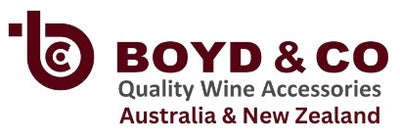
How many times in a restaurant have you seen the following ritual?
The waiter brings the bottle to the table and shows the customer the label.
The customer checks the label and nods.
The waiter removes the cork and pours a small amount of wine into the customer’s glass.
He or she swirls the wine, sniffs and tastes it and then usually, nods approval and the wine is poured.
The business of swirling is a small part of aerating the wine.
Likewise at home, you might hear someone say once a bottle of wine has been opened, it should be left to breathe.
What they mean is that the wine should get friendly with the air around.
Wine doesn’t breathe as such, it aerates.
An aerator forces air through the wine even as it is being poured.
Swirling the wine helps aerate it.
But if you want a full aeration in a very short period time, use a wine aerator.
They’re small, lightweight, usually made of acrylic and slip easily into the top of your wine bottle.
So what is decanting wine?
If you take your newly opened bottle of wine and pour it into a jug to decant, that’s pretty much the same thing as aerating.
You see the wine has been sealed up until then.
You want to give the wine the chance to oxidate, colloquially called breathing.
The oxidation process impacts both the aroma and taste of the wine.
Which is better, decanters or wine aerators?
There is one major difference between an aerator and a decanter - time.
Both decanting and aerating wine essentially does the same thing.
But an aerator does the process in a very short time, decanting can take many minutes.
Some people leave wine to decant for an hour.
Some aerators boast that with their device, your wine is decanted as you pour.
In other words the pouring from the bottle is actually decanting straight to the glass.
The wine is ready to drink immediately.
Where can you buy aerators?
Good liquor outlets stock them but for convenience, many customers shop online.
When quality aerators are in the $20-$50 range and can be purchased and delivered via online traders such as Boyd and Co or pick one up at your local wine merchant or favourite winery cellar door many people peruse reviews of the various products, talk to friends who have an aerator, and make their purchase accordingly.
Mind you there are even electronic aerators and they are more expensive.
It all depends on how often you’ll use an aerator and what sort of task you want it to perform.
But understand you have a wide choice of models on the market.
Many people purchase aerators as gifts for friends or family members who enjoy drinking all sorts of wine.
Are aerators worth it?
For people in a hurry or for an occasion when you suddenly decide to open a bottle of wine, an aerator is perfect.
If you are planning a meal and taking your time in choosing the right wine or wines, decanting is a sensible option.
You know when you’re dining so you open the wine to decant well before hand.
It’s your choice.
